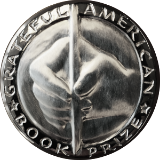History Matters
October 1 to October 15, 2020
 California’s Yosemite Valley, with its Mariposa Grove of giant sequoias, was a pristine home for Native Americans until the Gold Rush of 1849, but—then–thousands of prospectors trampled the environment. By 1864, conservationists were looking for a way to protect the valley’s fragile ecosystem; finally, they urged President Lincoln to come to the rescue, and he put the basin under the protection of a public trust. It wasn’t until October 1, 1890 that Congress, and President Benjamin Harrison–at the behest of concerned environmentalists shepherded by John Muir–officially created Yosemite National Park.
California’s Yosemite Valley, with its Mariposa Grove of giant sequoias, was a pristine home for Native Americans until the Gold Rush of 1849, but—then–thousands of prospectors trampled the environment. By 1864, conservationists were looking for a way to protect the valley’s fragile ecosystem; finally, they urged President Lincoln to come to the rescue, and he put the basin under the protection of a public trust. It wasn’t until October 1, 1890 that Congress, and President Benjamin Harrison–at the behest of concerned environmentalists shepherded by John Muir–officially created Yosemite National Park.
Today, there are more than 400 parks, comprising approximately 84 million acres—diffused throughout the country.
The Grateful American Book Prize recommends America’s National Parks by Ester Tome.
****

When Washington DC was founded in 1790, it usurped Philadelphia as the nation’s capital; the new location was more favorable. Two years later, the cornerstone of the White House was laid. Why the “White House?” Perhaps, as History.com put it, “because its white-gray Virginia freestone contrasted strikingly with the red brick of nearby buildings.” The British had set fire to it during the War of 1812, but when it was rebuilt, the structure was painted white.
The original White House was designed by the American architect James Hoban, an Irish immigrant, who also supervised its reconstruction, but the nickname did not become official, until President Theodore Roosevelt declared—in 1901–that it would—henceforth–be known as the White House.
The Grateful American Book Prize suggests The Residence: Inside the Private World of the White House by Kate Andersen Brower.
****

Today we live in the “the space age.” But prior to October 14, 1947, supersonic flight–or even a trip to the moon– was unthinkable. But on that day, World War II ace, U.S. Air Force Captain Chuck Yeager, became the first pilot to break the sound barrier, over the Rogers Dry Lake at Edwards Air Force Base in the Mojave Desert, in southern California. His Bell Aircraft Company experimental rocket plane, the X-1, was attached to the bomb bay of a B-29, rose to an altitude of 25,000 feet, and—released–with Yeager at the controls.
He took the aircraft to 40,000 feet, achieved a speed of more than 662 miles per hour, well past the sound barrier at that altitude.
Yeager was what some might call “a methodical daredevil.” During World War II he flew 64 missions over Europe, shot down 13 Nazi planes–and was shot down–over enemy territory. He escaped capture by making a four-month trek to neutral Spain.
For more information, the Grateful American Book Prize recommends Yeager: An Autobiography by General Chuck Yeager and Leo Janos.
History Matters is a biweekly feature courtesy of The Grateful American Book Prize.




